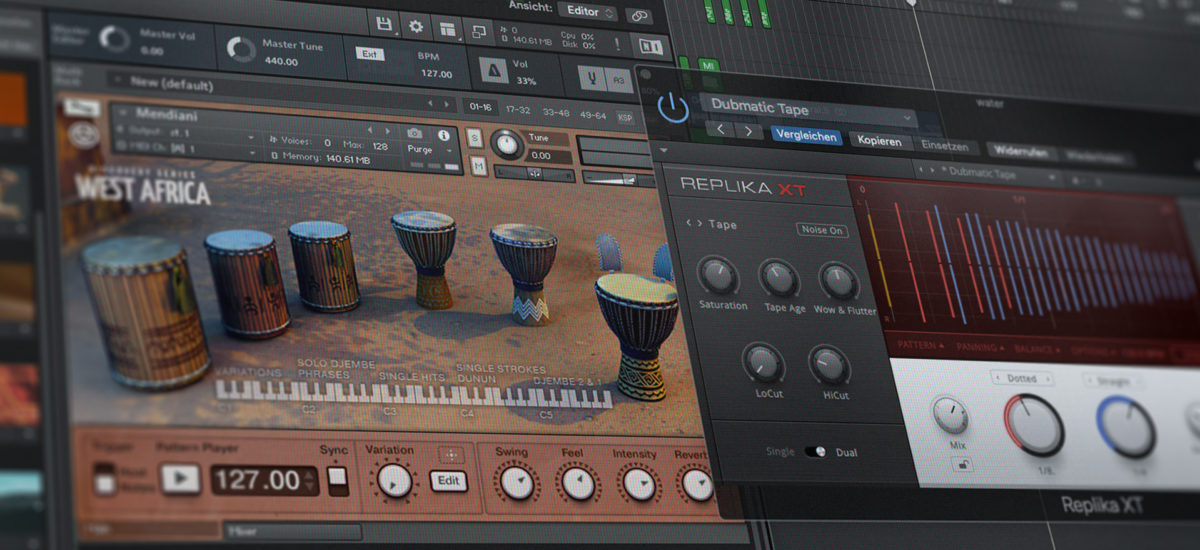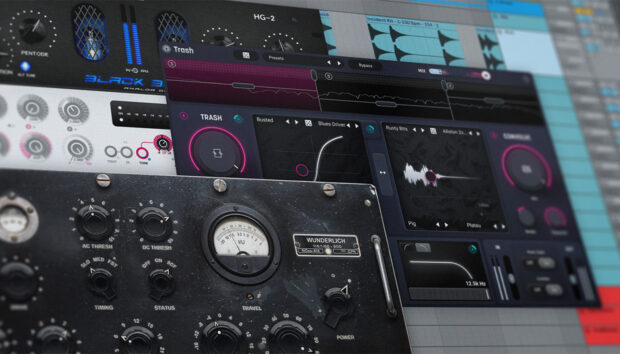
Synths are done, basic effects are in, and you’ve even manage to sneak in a toe-tapping rhythm? Check. All the building blocks of a great track are there, but if you’re trying to create ambient music that’s more memorable than missable, you might still find yourself missing a certain something. And that something is often what we loosely refer to as ‘atmosphere’ – the intangible X-factor that infuses a particular mood, vibe, or emotional direction into your track, turning it into something greater than a sum of its stems.
Of course, there’s no one formula for writing ambient music, but read on for seven of our best tips and tricks, along with some specially created audio examples. This isn’t a definitive list, but it ought to serve as an inspirational starting point for your own explorations into atmospheric music.
Reverb and delay
Let’s start with the obvious, in that reverb and delay effects should be among your first ports of call when you start making ambient music. Applying a huge reverb with the mix level set towards the dry end of the scale immediately gives sound spatial context and vibe. But don’t just reach for those standard rooms and hall reverbs, find a plug-in built with out-there sound design in mind, such as Blackhole by Eventide. High-feedback echoes are equally evocative. REPLIKA XT for instance offers a comprehensive selection of delay types, with filtering and modulation options expanding the plug-in’s functional remit to take in phasing, chorus, frequency shifting, and more – all good stuff for turning dry synth sounds and samples into atmospheric gold.
Reverb
Reverb + Delay
Groove shadows
A groove shadow is the reverb from one drum or percussion-part placed underneath another, and it’s just the thing for adding ear-catching otherworldliness to your beats (yes, we’re playing fast and loose with the definition of ambient here – but genre-bending makes everything more interesting). Set your main drum loop as dry as possible on one track, then put a rhythmically contrasting loop on a second track with a 100% wet reverb, and balance the levels of the two as you would with a reverb mix control. At this point, the drum loop and reverb should sound interesting, but still too disconnected for meaningful usage. Now insert a compressor or gate into the reverb channel and set its sidechain input to the main beat to get the reverb ducking and pumping in time with the audible beat.
Tweak the timing and response of the ducking with the compressor or gate’s threshold, along with attack and release controls. Plus as a further option, take the effect further by rendering the reverb as audio for slicing and processing. If you’re looking to produce more prototypically ambient music, consider using a groove shadow all by itself to lend a barely-there rhythmic undercurrent to your synth pads and reverb washes.
Real-world and found sounds
Let’s face it, ambient synth music can at times suffer from a little sonic sameness. For a more organic approach to atmospheric embellishment, take to the streets and countryside with a field recorder, smartphone, or laptop and mic to capture extended passages of cafe ambience, traffic noise, rainfall, wind, etc. Apply a bit of EQ or filtering to the resulting recording and layer it into the mix under your instrumental and vocal elements, at a level appropriate to the effect you’re trying to achieve. If all you want is a hint of subliminal presence, take the signal all the way down until it’s barely audible, so that you only really notice it by its absence when muted.
Drones and textures
Working atmosphere into your tunes is a great opportunity to flex your sound design chops in order to create mood-enhancing drones and ambiences. There are plenty of inspirational soft synths and KONTAKT instruments available to provide you with this quality source material. Up there with the very best is Gothic Instruments’ DRONAR series of KONTAKT PLAYER libraries, the first eight of which were recently brought together in the enormous (and NKS-compatible) DRONAR Master Edition, which uses a widerange of acoustic, electric, and electronic multi-samples as the basis for an endless array of highly customizable textures and soundbeds. You don’t have to splash out on new software to create really convincing ambient electronic music, though; multi-oscillator synth sounds, white noise, and extreme time-stretching of vocals and other signals are all great for this sort of thing.
Peace and quiet
When you’re composing ambient music, don’t forget that you always have the option to just… not. Silence is a powerful tool for manipulating the vibe of any track and can come in many forms. From aerating spaces between the hits in a slow, thinned-out drum part, to slamming a club-banger dead stop right before a drop, the resulting effects are the same.
If the total absence of sound is too much, play around with quietness instead. For example, try dropping from a head-nodding breakbeat to a solo sustained string, a delicate acoustic guitar line or held vocal note, then kick everything back in full-force.
Cinematic orchestra
Movie and videogame soundtrack producers are masters of atmospheric sound design, so feel free to take a leaf – or several – from their numerous books. After all, what is ambient music if not the perfect accompaniment to emotive moving pictures? Exploit the sound design tropes of horror, sci-fi, and action films to convey emotion, suspense, and situational context. From stratospheric Vangelis-style synth work, retro-styled sample+hold modulation, and Theremin-style alien spookiness; to sul ponticello strings, reverberant low piano notes, and even those done-to-death gunshots, police sirens, and actual movie dialogue samples. For example check out 187 Lockdown’s garage classic ‘Gunman’, a track absolutely defined by the pocketwatch chimes from Sergio Leone’s For a Few Dollars More; or Aim’s 1999 hip hop essential, ‘Demonique‘, which underpins dialogue samples from Halloween and Halloween 2 with a suitably doom-laden combination of beats, strings and choir.
Looking for more tips – or just a second opinion? Our friends over at iZotope have their very own round-up of ambient pro tips, from synth layering to automating effects. Learn how you can better understand atmosphere in ambient music here.















